Treating a sunburn
Just one blistering sunburn during childhood or adolescence nearly doubles a person’s chance of developing skin cancer (and most of us probably had a lot more than one burn as kids!). Fortunately, there are steps you can take after a sunburn that may help reduce your risk of developing cancer and make your recovery more comfortable, says Susan Bard, MD, a board-certified dermatologist at New York City’s Mt. Sinai hospital who specializes in skin cancer prevention and treatment.
According to the U.S. Department of Health and Human Services, more than 33% Americans report being sunburned each year. Luckily the majority of those sunburns are mild, falling into the category of a first-degree burn—bright red skin that’s painful to the touch. A first-degree sunburn involves only the outer layer of the skin, explains Rina Allawh, MD, a dermatologist at Montgomery Dermatology in King of Prussia, PA.
A sunburn that is red, painful, swells up and blisters may indicate a second-degree burn—meaning that the burn has gone into the deeper skin layers and nerve endings have been damaged, says Dr. Bard.
Being in the sunshine feels amazing—and sunshine has impressive health benefits—yet a sunburn can happen faster than you think, with damage starting after as little as 15 minutes of direct sun exposure, she says. So what can you do if you find that you have suddenly gone from “soaking up a little vitamin D” to crispy or even broiled?
Spending This Much Time Outside Each Day Could Make You Live Longer
“It’s important to get out of the sun and treat sunburns right away, both for your comfort and for protection,” says Dr. Bard.
No doubt you already know about the healing properties of aloe vera when it comes to sunburn—but what if you’re all out and you need relief fast? You can treat first-degreeburns with things you probably already have in your medicine cabinet or pantry. Second-degree burns require a little more caution—if you have blisters, clean them gently with soap and water and cover them lightly with a bandage. Do not pop blisters. It’s fine to use any of these treatments on the skin surrounding the blisters but avoid putting them on the blisters themselves, especially if they have opened.
Here are some of the best at-home remedies for sunburn that actually work.
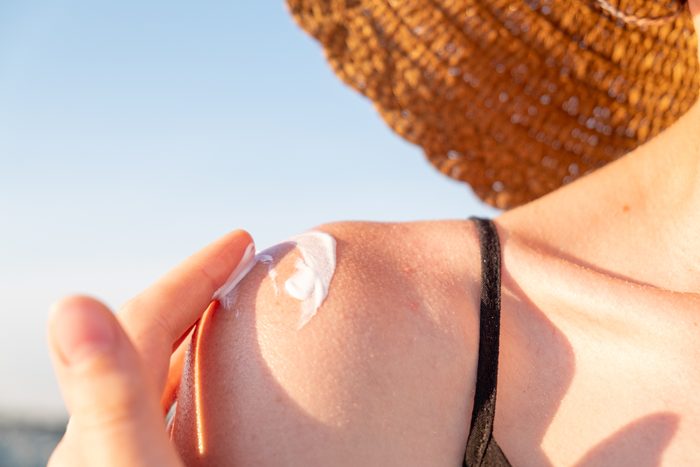
Use sunscreen lotion
We’re not trying to guilt-trip you—if you’re burned you probably already know that you should have been more on top of your sunscreen application earlier—but did you know there’s still a benefit to using it, even after you’re burned, says Dr. Bard. Sunscreen lotions help in two ways: The emollient properties of the lotion can help soothe tight, painful skin; and the sunscreen will help prevent more burning, especially if you can’t get out of the sun right away.
Bonus: You probably already have sunscreen lotion handy (and if you don’t, it’s one of the medicine cabinet staples you should always keep on hand.
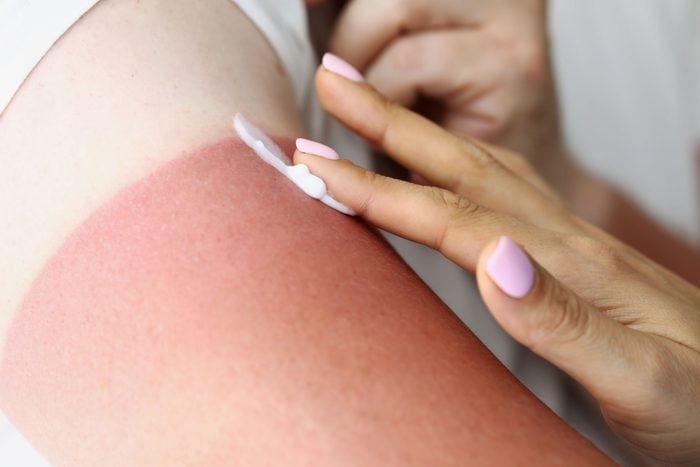
Apply willow bark cream
Willow bark is a natural alternative to aspirin, having pain-relieving and anti-inflammatory properties—both things that can help soothe a fresh sunburn. Rubbing a thin layer of willow bark cream on particularly sore or itchy spots can help you heal more comfortably.
You can find formulations, like this cream from Nature’s Willow, that include cooling menthol and eucalyptus for even greater relief. If you have blisters, willow bark with tea tree oil has natural anti-microbial properties.
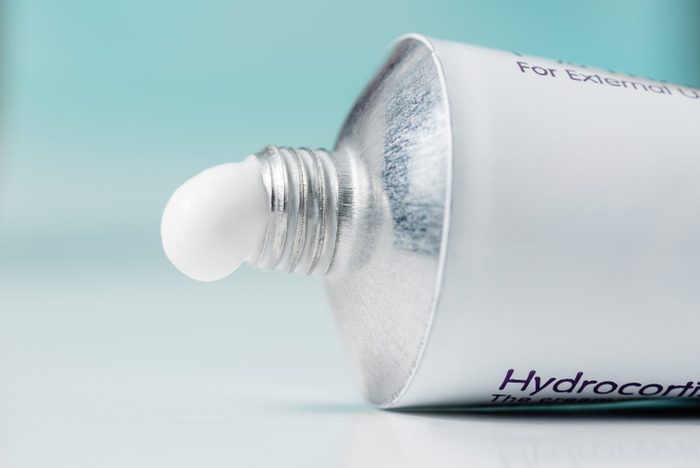
Massage on some hydrocortisone cream
You can buy 1% hydrocortisone cream over the counter at any grocery store or pharmacy. You won’t want to slather it over your entire skin but applying a thin layer of cream to particularly painful or itchy spots can reduce itchiness, inflammation, redness, swelling, and pain, says Dr. Bard. It’s particularly helpful if you’re having a hard time sleeping due to your sunburn pain.
Hydrocortisone cream is also great for relieving other common summer skin problems, including itchy insect bites and poison ivy pain.
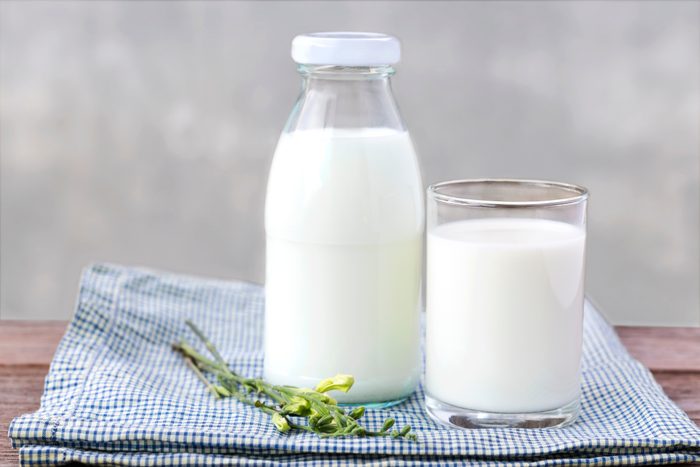
Soak in milk
“Soaking in milk will have a drawing effect on a burn—it’s due to the pH, fat, and cold temperatures,” says Francesca Fusco, MD of Wexler Dermatology in New York City. If you don’t have enough milk handy to fill up an entire basin, simply soak a washcloth in a bowl of cool milk, then gently lay the milky compresses on the burned areas of your body. The milk will help create a protein film along your skin that reduces heat, pain, and sensitivity.
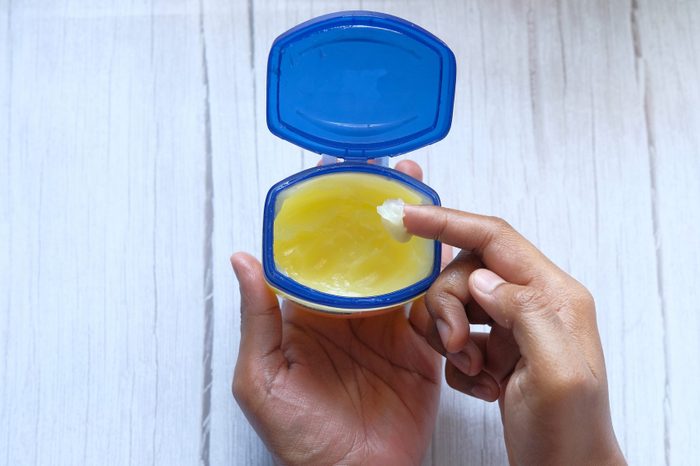
Refrigerate a tub of Vaseline
“When you have a sunburn, it is important to keep your skin well-hydrated and moisturized, as it will improve the pain and accelerate the healing process,” says Samer Jaber, MD of Washington Square Dermatology in New York City. “A great trick is putting Vaseline in the refrigerator for a few minutes so it goes on cold. The cold will soothe your sunburn, and the Vaseline will help restore your skin barrier, improving the healing process.” (Find out the sunscreen myths that make dermatologists cringe.)
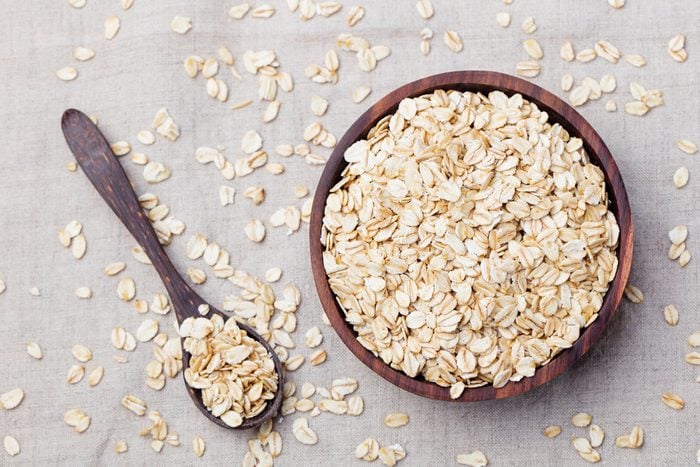
Take an oatmeal bath
One of the worst side effects of a bad sunburn is the insatiable urge to scratch peeling skin. Taking a bath in lukewarm water is one sunburn remedy that can quell the itch and soothe the burn, notes Joshua Zeichner, MD, New York City-based dermatologist and director of cosmetic and clinical research in dermatology at Mount Sinai Hospital. Add at least one cup of finely ground oats to your bathwater, using your hand to swirl the water to evenly distribute the oatmeal. Soak in the bath for 15 to 20 minutes. You can repeat this oatmeal bath a few times a day for relief from itching.
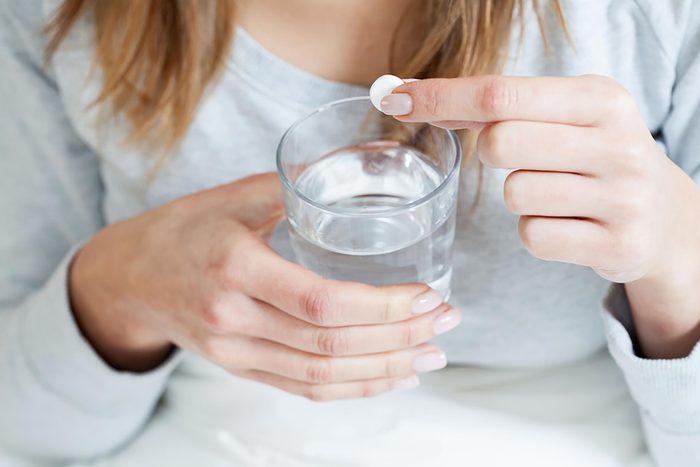
Create your own topical cream
“For an isolated area like a finger or your lips, dissolve an aspirin in a tablespoon of cool water and make a paste. Apply to the affected area,” advises Dr. Fusco. (Be careful not to lick your lips because it’s super bitter.) Rinse off the paste after allowing it to sit on the affected area for five minutes. While you’re waiting for it to absorb, you could also take one of those aspirins to ease your pain and inflammation.
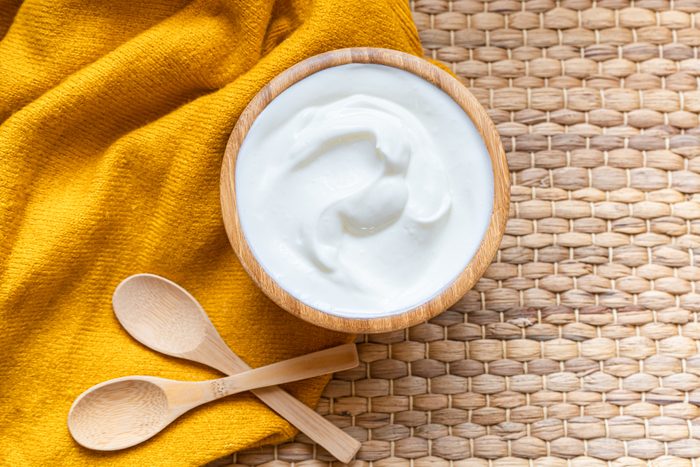
Use yogurt as an antibacterial cream
You’ve likely heard that aloe makes a great sunburn remedy. But don’t worry if you don’t have aloe handy; there are plenty of kitchen ingredients that can work as highly effective substitutes. Yogurt, in particular, is useful in treating a damaged skin barrier, according to Dr. Zeichner. “First, high levels of lactic acid may have antimicrobial properties, lowering levels of harmful bacteria on the skin,” he says. “Yogurt also contains natural probiotics that help restore a healthy skin microbiome.”
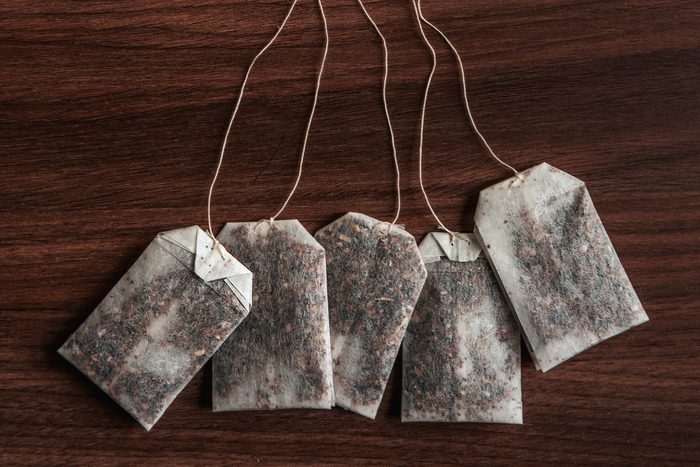
Press tea bags onto your burn
“Black tea contains an ingredient called tannic acid, which helps to calm down skin irritation, soothing benefits and has the added benefit of maintaining skin’s pH,” explains Dr. Allawh. You can brew chamomile tea, thoroughly chill it, then use the tea bags or a towel compress to apply it to your burn.
Get Rid of a Sunburn: 9 Makeup and Skincare Tricks to Reduce the Redness
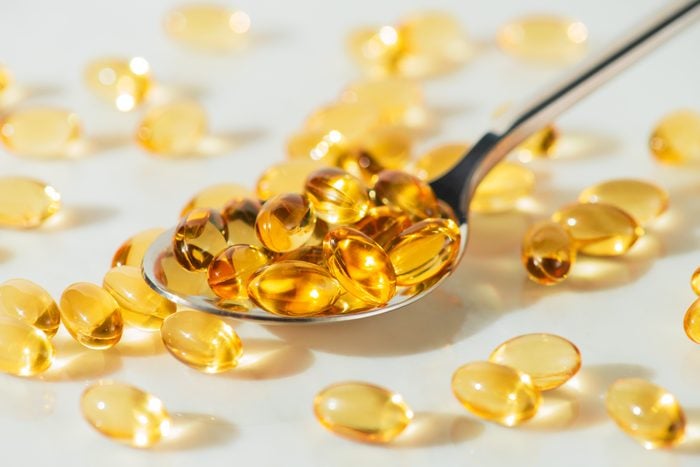
Break open a few vitamin E capsules
“Vitamin E is an antioxidant that helps to decrease skin inflammation,” explains Dr. Allawh, who suggests “utilizing the oil in a vitamin E capsule and rubbing it gently into the wound as vitamin E helps protects the skin from further damage from the UV rays—and it may also help with the burning and itching.” To prevent these free radicals from stealing electrons from your healthy molecules, vitamin E is one of the best sunburn remedies that can provide electrons for them, thus preventing your healthy molecules from depleting, she says.
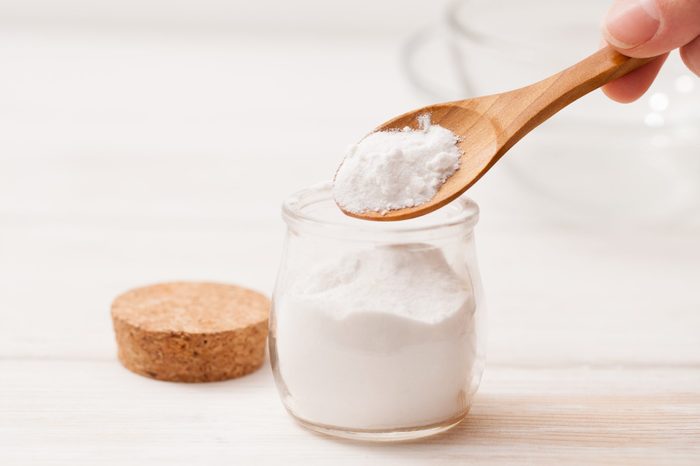
Take a baking soda bath
You may be noticing a trend in these sunburn remedies: Soaking is often a great way to heal and moisturize your burn. One way to accomplish this is to take a baking soda bath.
“Baking soda has basic properties and will help balance the pH of the inflamed sunburn skin,” says Dr. Allawh. “It will help reduce the burning, skin irritation, and is overall soothing.” She recommends creating a mixture of baking soda and water (1 cup of water: 4 tablespoons of baking soda) and then blotting the sunburned area with the mixture every three hours. You also can create a soothing baking soda bath and soak for 10-15 minutes. After the bath, she suggests gently patting your skin dry. Then apply a thick moisturizer that you’ve kept chilled in the refrigerator. The coolness should help ease the burning sensation.
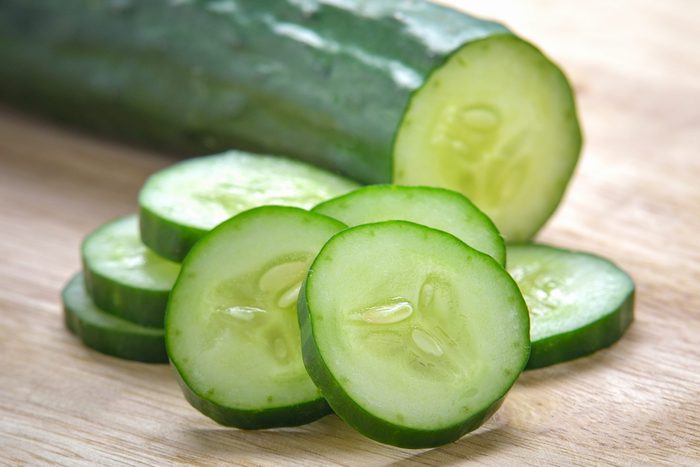
Create a cucumber paste
Cucumbers are anti-inflammatory; that’s why people place a slice on their puffy eyes. Cukes contain natural antioxidants, and they have analgesic (pain-relieving) properties. To take advantage of these benefits, chill and then blend two cucumbers to make a raw paste. Apply the creamed cucumber to any burnt or peeling areas on your body to soothe and heal them more quickly.
Next up, besides a nasty sunburn, learn about the other weird ways the sun affects your body.
For wellness wisdom (and an occasional dose of humor), get The Healthy @Reader’s Digest newsletter and follow The Healthy on Facebook, Instagram, and Twitter. Keep reading: